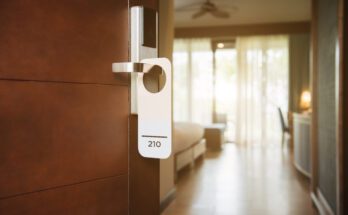Nolan Arenado’s Season Is Over, but He and Rockies Are Still Stuck With Each Other
Listening to the broadcast of the Rockies-Giants game on Monday night, one of the announcers — I forget which side it was, as I was in the midst of flipping around MLB.TV — noted that Arenado has been so durable that “the last time he was on the Injured List, it wasn’t even called the Injured List” or words to that effect. In 2014, he missed 37 games after fracturing the middle finger of his left hand while sliding head-first into second base. From 2015-19, he averaged 157 games per year from 2015-19, playing more games (787) than all but three players, namely Eric Hosmer (795), Manny Machado (793), and Paul Goldschmidt (791).
Via MLB.com’s Thomas Harding, the severity of the injury didn’t register initially, but the 29-year-old third baseman has been in constant pain since. “I thought it was from sleeping, but it just wouldn’t go away,” said Arenado, who underwent an MRI on Sunday and reached what he called “a mutual agreement” with the team on shutting down. Again via Harding:
“After we got the MRI yesterday I thought it was best I would start the rehab process right away, especially with where the team is. It’s kind of unraveled just a little bit. So I thought maybe the best to start it [rehab] now, get it going so I don’t have to deal with this in the offseason — being injured.
“If we were in it, I would like to believe that I would try to find a way. I think the trainers, they’re good, and they know how to find a way to make it feel alright. But it’s just probably the best thing to do, rest right now.”
Though Arenado initially appeared to be all right after the Piscotty play — he homered six times from August 3-12, by which point he was hitting .273/.333/.576 — the injury has lingered and taken its toll, putting a sizable dent in his offense. After hitting .315/.379/.583 (128 wRC+) with 41 homers in 2019, he slipped to .253/.303/.434 (76 wRC+) with eight homers this year, with only one since August 20. His on-base and slugging percentages are his lowest since his 2013 rookie season, while the other numbers mentioned there are career lows, as is his 0.8 WAR.
You can see the stamp left by the injury across several of Arenado’s offensive metrics, with or without contact. His inability to follow through with his swing has limited how often he takes his cuts; his 48.2% swing rate matches his career low, while his 67.0% zone swing rate is his lowest by 1.6 percentage points. His 7.5% swinging strike rate and 10.0% strikeout rate are both career lows as well.
Even while making contact with a career-high 93.6% of pitches in the strike zone and producing a typical 37.3% groundball rate, Arenado’s average exit velocity of 87.8 mph is his lowest mark of the Statcast era, 1.6 mph below last year’s mark. His barrel and hard-hit rates have both fallen (the former from 8.0% to 5.4%, the latter from 37.6% to 33.7%), and of course, so has his xwOBA (from .349 to .298). Via the latter, his percentile ranking has dropped from the 65th to the 13th, as stark as his decline gets.
Where the injury hasn’t affected Arenado’s game, at least by the numbers, is on defense, which is at least somewhat surprising because even though it’s his non-throwing shoulder that’s affected, it’s not as though he’s not using that arm all the time. Both his 6.7 UZR and 15 DRS are tops among all third basemen, the latter equaling the combined total of the second through fourth-ranked ones (Isiah Kiner-Falefa, Machado, and Evan Longoria), and on a rate basis, both metrics are well ahead of last year’s already-outstanding 10.3 UZR and 18 DRS — in less than one-third the number of innings. Of course, we can take those small-sample numbers with some amount of salt, but at least Arenado’s glovework did yield some value. In fact, among Rockies position players, only Trevor Story (2.3) has outdone his WAR, while Charlie Blackmon (0.8) has matched it.
Then again, that’s part of Colorado’s ongoing problem; their lineup lacks above-average players. In the run-up to the August 31 trade deadline, they made my Replacement Level Killers lists at no fewer than five out of nine positions (including designated hitter, a position where they had no shortage of candidates), and through Monday had given at least 99 PA to seven players with WARs of 0.1 or lower, including four with -0.2 or lower (Matt Kemp, Tony Wolters, Daniel Murphy, and David Dahl). Not even a healthy Arenado would have been enough to overcome that, and now the front office — which just isn’t good at this team-building stuff — have squandered another season of their young, affordable, and very good rotation core of Kyle Freeland, German Marquez, and Antonio Senzatela.
Another season with such a poorly built lineup around Arenado raises the question as to whether he’s played his last game in Colorado. Though he signed an eight-year, $260 million extension in February 2019, he’s been at odds with the Rockies’ efforts to build around him, saying last September, towards the end of a 91-loss season, that the team’s effort felt “like a rebuild,” words that incensed owner Dick Monfort and general manager Jeff Bridich. The Rockies explored trading Arenado over the winter, but the presence of an opt-out clause in his deal, after the 2021 season, complicates matters considerably — and he also has a no-trade clause. In January, when talks with the Cardinals warmed up to room temperature, Craig Edwards called the opt-out “a trade killer,” adding this:
A year ago, Ben Clemens took a look at the opt-outs in the contracts of Manny Machado and Arenado to try and determine their value. For Arenado, he either performed like a five-to-six-win player for three seasons and then opted out or he averaged a little under three wins per season for eight years. That scenario made Arenado’s opt-out valuable at that time, costing a little over a million per WAR compared to a contract without one. That gap has only widened over the past year with Arenado still playing very well and getting a year closer to the opt-out. With the opt-out, the expected rate of pay per win for Arenado gets up near $11 million per win…
The solution to this Gordian knot is to simply cut the opt-out, a part of the contract that came from the Rockies’ front office. No reasonable trade can be made with the opt-out still intact. Colorado could offer to conditionally pay $8 million per year if Arenado doesn’t opt out, but agreeing to pay $40 million and still not getting a great return package isn’t that feasible. If Arenado was willing to accept a $30 million team option on an eighth year with a $15 million buyout, that wouldn’t come close to the value of the opt-out, but it might provide enough incentive to waive that opt-out. Unfortunately, adding that $15 million guarantee also decreases the potential return.
As of late February, Arenado wasn’t on speaking terms with Bridich, according to USA Today‘s Bob Nightengale, and while the coronavirus pandemic put that matter on the back burner, this week the Denver Post‘s Patrick Saunders described the situation as “a chilly co-existence.” As Arenado said last week, “Eight teams make the playoffs. And if we’re not one of those eight teams, that’s not a very good sign.”
The problem for both Arenado and the Rockies is that parting company this winter won’t be any easier. Having gotten negative WAR for the $219 million they’ve committed to free agents Murphy, Ian Desmond, Wade Davis (who was released this week), Mike Dunn, Jake McGee, and Bryan Shaw over the past four winters, the Rockies can’t stomach the thought of eating a huge chunk of their star third baseman’s contract just to be rid of him, to say nothing of the message that would send to their fans or to Story, who’s a year away from reaching free agency. And even if the opt-out matter were settled, getting value for Arenado in a trade would be all the more difficult given the combination of his subpar season, teams’ willingness to take on so much money after a year with no gate revenues, and uncertainty about what 2021 will hold in that department. Given the current economic climate, Arenado would be a fool to walk away from the $164 million that’s on the other side of that opt out, for it’s difficult to imagine him getting close to that kind of money in a new deal while having just passed his age-30 season.
And so, barring a more radical restructuring of Arenado’s contract — or a makeover of the rest of the roster with an overhauled front office, or a miracle trade, prospects whose odds appear longer than the Rockies’ current playoff chances — this unhappy marriage appears destined to continue for at least another year. Once the opt-out is no longer an issue, a parting of the ways will be more likely, but for now, there’s no joy in Denver.


